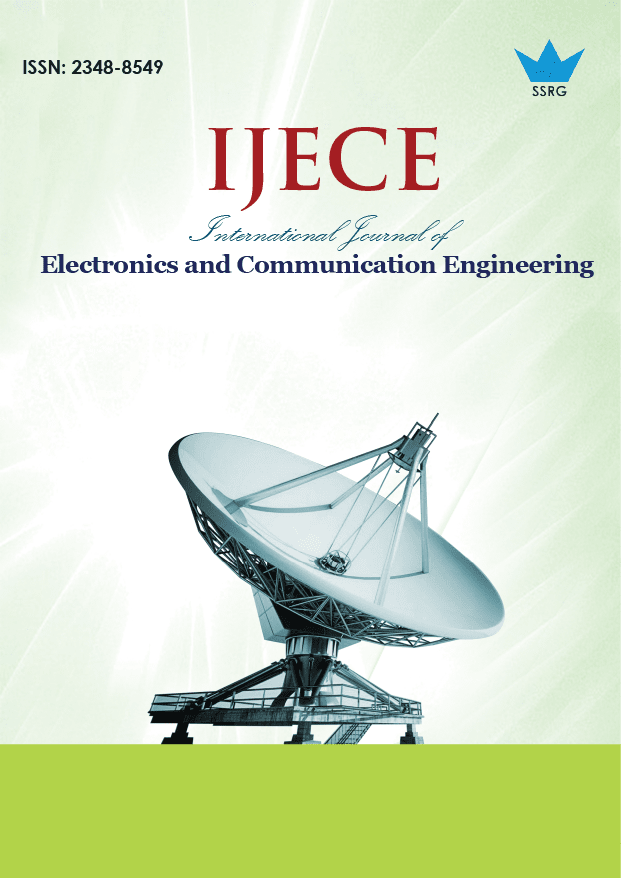Bot Detection and Multi-Level Encryption in Multiple Cloud Storage for Recommendation Systems

| International Journal of Electronics and Communication Engineering |
| © 2025 by SSRG - IJECE Journal |
| Volume 12 Issue 7 |
| Year of Publication : 2025 |
| Authors : J. Chitra, S. K. Piramu Preethika |
How to Cite?
J. Chitra, S. K. Piramu Preethika, "Bot Detection and Multi-Level Encryption in Multiple Cloud Storage for Recommendation Systems," SSRG International Journal of Electronics and Communication Engineering, vol. 12, no. 7, pp. 390-399, 2025. Crossref, https://doi.org/10.14445/23488549/IJECE-V12I7P130
Abstract:
The explosive growth of Cloud Computing (CC) and recommendation systems has created novel challenges in maintaining system dependability, privacy, and data security. This study proposes a novel method called Enhanced Encryption and Bot Detection for Multiple to solve these issues. Cloud Storage and efficient Recommendation Systems. Multilevel encryption is used in the suggested system to improve data resilience and secrecy. Each piece of data is encrypted using cutting-edge cryptographic techniques to provide strong security against breaches and unwanted access. The information is safely dispersed over many cloud platforms. To improve the integrity of recommendation systems, the framework also includes an advanced Bot Detection mechanism. This mechanism detects bot-driven actions that may jeopardize the accuracy of recommendations by applying Machine Learning (ML) algorithms. This two-tiered strategy preserves the precision and reliability of recommendation systems while fortifying the security of multi-cloud storage.
Keywords:
Bot detection, Cloud computing, Multilevel encryption, Multiple cloud storage, Recommendation systems.
References:
[1] Chinnadurai Manthiramoorthy, K. Mohamed Sayeed Khan, and A. Noorul Ameen, “Comparing Several Encrypted Cloud Storage Platforms,” International Journal of Mathematics, Statistics, and Computer Science, vol. 2, pp. 44-62, 2024.
[CrossRef] [Google Scholar] [Publisher Link]
[2] Dinesh Reddy Chirra, “Secure Data Sharing in Multi-Cloud Environments: A Cryptographic Framework for Healthcare Systems,” Revista de Inteligencia Artificial en Medicina, vol. 15, no. 1, pp. 821-843, 2024.
[Google Scholar] [Publisher Link]
[3] Akif Quddus Khan et al., “Cloud Storage Cost: A Taxonomy and Survey,” World Wide Web, vol. 27, pp. 1-54, 2024.
[CrossRef] [Google Scholar] [Publisher Link]
[4] Mais Irreem Kamal, and Laheeb Ibrahim, “The Multilevel Encryption Model: A Review,” Al-Rafidain Journal of Computer Sciences and Mathematics, vol. 18, no. 1, pp. 40-49, 2024.
[Google Scholar]
[5] Zhaowei Hu, Kaiyi Hu, and Milu Md Khaled Hasan, “A Bidirectional Reversible and Multilevel Location Privacy Protection Method Based on Attribute Encryption,” Plos One, vol. 19, no. 9, pp. 1-26, 2024.
[CrossRef] [Google Scholar] [Publisher Link]
[6] Zijian Cai et al., “LMBot: Distilling Graph Knowledge into Language Model for Graph-less Deployment in Twitter Bot Detection,” Proceedings of the 17th ACM International Conference on Web Search and Data Mining, Merida Mexico, pp. 57-66, 2024.
[CrossRef] [Google Scholar] [Publisher Link]
[7] Isha Sharma, and Monika Saxena, “A Review of Lightweight Cryptography Algorithm for Healthcare Using Multi-Level Encryption,” SSRN, pp. 1-7, 2024.
[CrossRef] [Google Scholar] [Publisher Link]
[8] Guangcan Yang et al., “An Efficient Attribute-Based Encryption Scheme with Data Security Classification in the Multi-Cloud Environment,” Electronics, vol. 12, no. 20, pp. 1-19, 2023.
[CrossRef] [Google Scholar] [Publisher Link]
[9] P. Hari Kumar, and G.S. AnandhaMala, “HMAC-R: Hash-Based Message Authentication Code and Rijndael-Based Multilevel Security Model for Data Storage in Cloud Environment,” The Journal of Supercomputing, vol. 79, pp. 3181-209, 2023.
[CrossRef] [Google Scholar] [Publisher Link]
[10] Shani Raj, and B. Arunkumar, “Enhanced Encryption for Light Weight Data in a Multi-Cloud System,” Distributed and Parallel Databases, vol. 41, pp. 65-74, 2023.
[CrossRef] [Google Scholar] [Publisher Link]
[11] Ilias Dimitriadis, George Dialektakis, and Athena Vakali, “CALEB: A Conditional Adversarial Learning Framework to Enhance Bot Detection,” Data & Knowledge Engineering, vol. 149, 2024.
[CrossRef] [Google Scholar] [Publisher Link]
[12] Anant Shukla, Martin Jureček, and Mark Stamp, “Social Media Bot Detection Using Dropout-GAN,” Journal of Computer Virology and Hacking Techniques, vol. 20, pp. 669-680, 2024.
[CrossRef] [Google Scholar] [Publisher Link]
[13] Rizwan Hamid Randhawa et al., “Deep Reinforcement Learning Based Evasion Generative Adversarial Network for Botnet Detection,” Future Generation Computer Systems, vol. 150, pp. 294-302, 2024.
[CrossRef] [Google Scholar] [Publisher Link]
[14] Fanrui Zeng, Yingjie Sun, and Yizhou Li, “MRLBot: Multi-Dimensional Representation Learning for Social Media Bot Detection,” Electronics, vol. 12, no. 10, pp. 1-24, 2023.
[CrossRef] [Google Scholar] [Publisher Link]
[15] Furqan Zahoor et al., “Design implementations of Ternary Logic Systems: A Critical Review,” Results in Engineering, vol. 23, pp. 1-23, 2024.
[CrossRef] [Google Scholar] [Publisher Link]
[16] Shubham Verma et al., Soldier Strap: An Iot-Based Safety and Security Band for Soldiers, 1st ed., IoT-Enabled Healthcare Systems, Apple Academic Press, pp. 1-20, 2024.
[Google Scholar] [Publisher Link]
[17] Ramalingam Praveen, and Parameswaran Pabitha, “Improved Gentry–Halevi's Fully Homomorphic Encryption-Based Lightweight Privacy Preserving Scheme for Securing Medical Internet of Things,” Transactions on Emerging Telecommunications Technologies, vol. 34, no. 4, 2023.
[CrossRef] [Google Scholar] [Publisher Link]
[18] Peace Azugo, Hein Venter, and Mike Wa Nkongolo, “Ransomware Detection and Classification Using Random Forest: A Case Study with the UGRansome2024 Dataset,” Arxiv Preprint, pp. 1-12, 2024.
[CrossRef] [Google Scholar] [Publisher Link]
[19] Malak Aljabri et al., “Machine Learning-Based Social Media Bot Detection: A Comprehensive Literature Review,” Social Network Analysis and Mining, vol. 13, pp. 1-40, 2023.
[CrossRef] [Google Scholar] [Publisher Link]
[20] Vajratiya Vajrobol et al., “Adversarial Learning for Mirai Botnet Detection Based on Long Short-Term Memory and XGBoost,” International Journal of Cognitive Computing in Engineering, vol. 5, pp. 153-160, 2024.
[CrossRef] [Google Scholar] [Publisher Link]

 10.14445/23488549/IJECE-V12I7P130
10.14445/23488549/IJECE-V12I7P130